





9 useful products about which unfairly forgot
Turnip, radish, horse-radish – once these and other products enjoyed wide popularity at our ancestors, being not only the food sating an organism but also the medicines curing of many diseases. Unfortunately, the use of some of them got out of fashion long ago, and once favourite plants and vegetables almost ceased to make a contribution to human health. Inclusion of such products in a modern diet − an effective measure of prevention and treatment of diseases which were seldom suffered by our ancestors − obesity, a diabetes mellitus, diseases of bone system, atherosclerosis of vessels and many other illnesses.
1. Turnip
Practically till the 20th century turnip was a guest of honor of the Russian table. From a root crop soups, porridges, stuffings for pies, a pickles were cooked. Today turnip can be compared to exotic vegetable from which dishes – an unusual occurrence safely. Unfortunately − to a root crop ordinary-looking by sight it is difficult to this to find analogs on nutritional value.
Being a source of vitamin C, carotene, mineral salts, turnip serves as an effective remedy from avitaminosis, and the high content of calcium (together with the magnesium improving its assimilation) allows vegetable to promote prevention of rickets and diseases of bone system. At pulp of a root crop there is a natural antibiotic, growth-inhibiting practically all species of bacteria and fungi (except staphylococcus and colibacillus) thanks to what turnip acts as an effective remedy for treatment of bronchitis, laryngitis, asthma, a dentagra, and also many other illnesses.
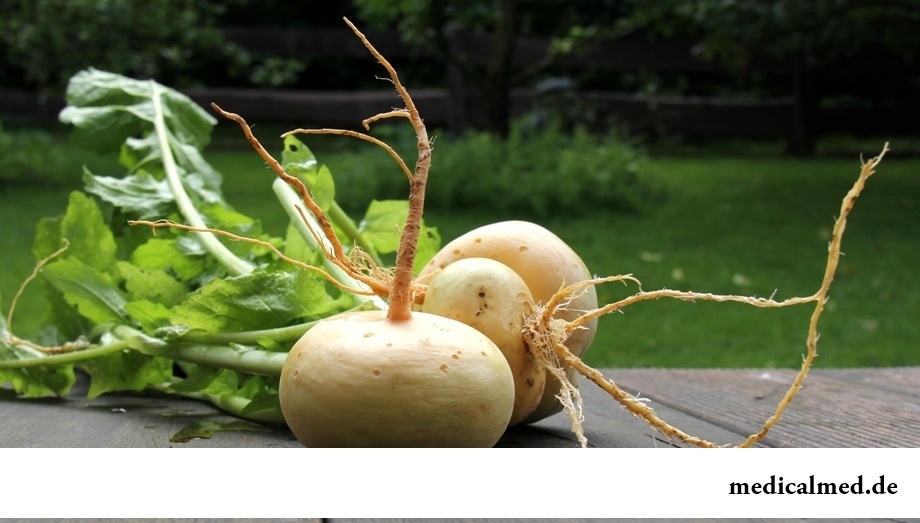
2. Swede
Swede − one more valuable vegetable which advantage is unfairly forgotten. The swede surpasses onions, tomatoes and oranges in the content of vitamin C, approaching on its indicators a white cabbage. "the Swedish turnip" dishes – and it can be salads, soups, ragouts – are useful to the diabetics and people having obesity. Rough cellulose in its structure perfectly clears intestines, and the juice received from pulp possesses laxative action. The vegetable by outward reminding beet with success is applied in traditional medicine to treatment of skin diseases, diseases of a respiratory organs and clarification of an organism.
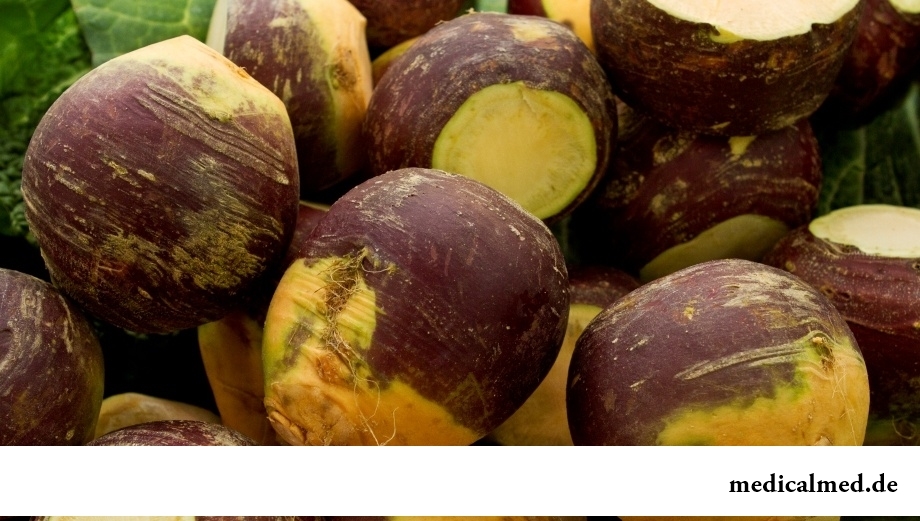
3. Oat flour
The flour from grains of barley, peas or oats called by oat flour – the ancient Russian product which is widely used for preparation of porridges, soups, pastries, kissel and even tea drinks. Advantage of oat flour in comparison with usual flour in its high nutritiousness (thanks to the remains of fractions of grain), and also the special taste and aroma reminding cocoa. It is remarkable that for consumption oat flour it is not necessary to prepare – to make enough a product hot milk or water.
Oat flour is rich with bioflavonoids which problems include regulation of work of immune and endocrine systems, clarification of an organism from toxic substances, and also active participation in cell regeneration. Group B vitamins positively influence a condition of a nervous system, memory, hair and nails, and rare antioxidants of an avenantramida which can be met only in oats interfere with formation of plaques on walls of vessels. Unique properties of oat flour do it irreplaceable for a healthy diet – but, unfortunately, it, as well as many other primordially Russian products, on shelves of shops already almost not to meet.
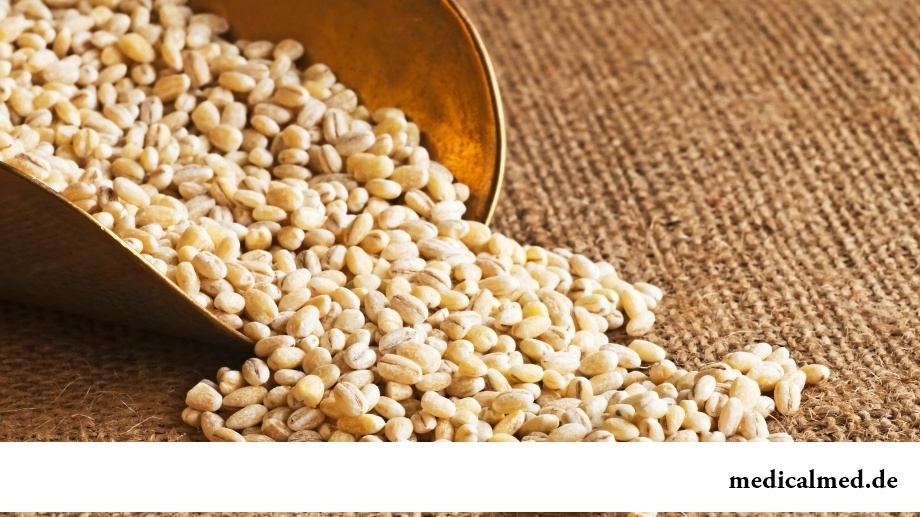
4. Girasol
Girasol – the next root crop which consumption was forced out itself by potatoes. Nevertheless, this vegetable, sweetish on taste, is much more useful than the fellow, surpassing not only potatoes, but also carrots, beet and turnip in the content of iron. The root crop which is often called by an earth pear contains inulin in a large number – a natural analog of the insulin regulating sugar level in blood that does a girasol by a product number one in food of the people sick with a diabetes mellitus.
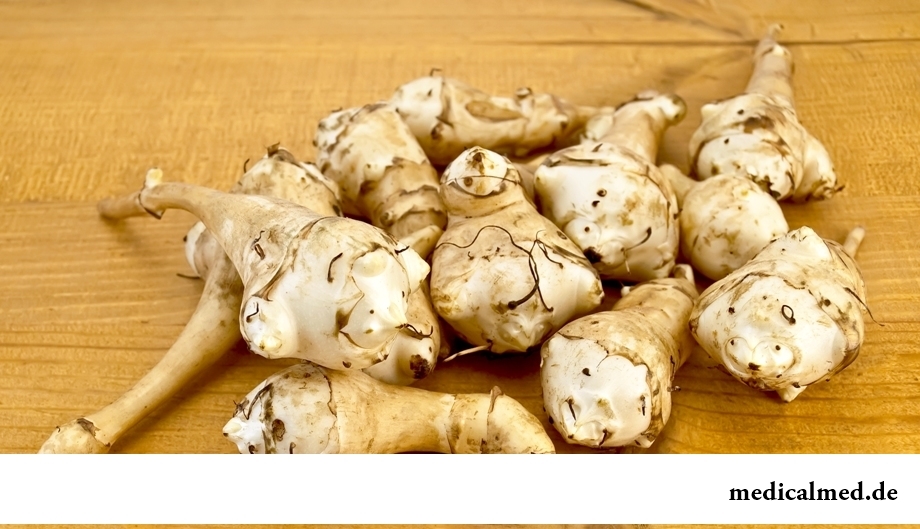
5. Horse-radish
This plant, traditional for our edges, having acute spiciness appears on a modern table too more and more seldom. However the neglect horse-radish has no reasons: the plant advances many vegetables on the content of carotene, vitamins of group B, the indigestible rough fibers improving work of intestines, and the vitamin C share in its leaves exceeds indicators of a citrus, conceding only to blackcurrant and a dogrose. Speaking about advantage of horse-radish, it should be noted its high bactericidal properties reached thanks to a lysozyme − to an antibiotic, pernicious for the majority of microbes. So, the plant is widely used at treatment of quinsy, whooping cough, inflammations of urinary channels, and still is an effective remedy for removal from an organism of helminths.
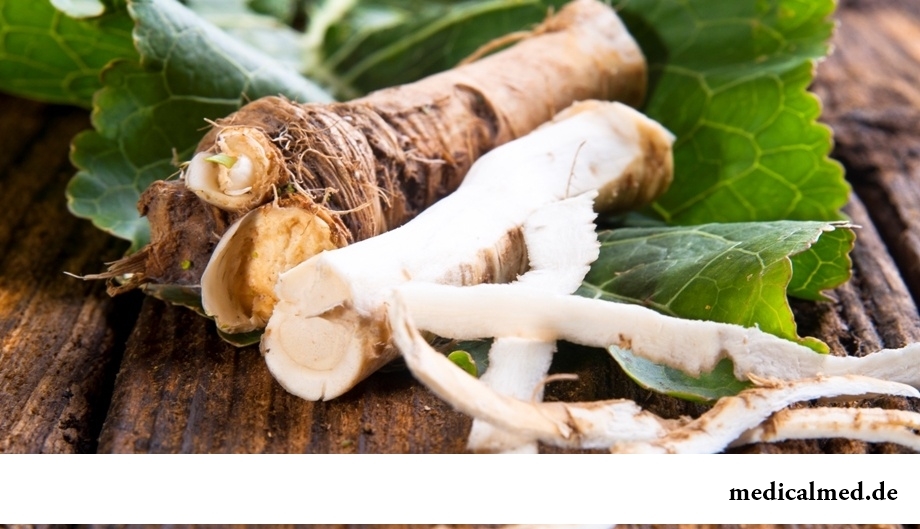
6. Radish
One more half-forgotten vegetable which use reckoned with honey as "all diseases medicine". And today the radish, a little bitterish on taste, did not lose the curative properties. It is considered that dishes from it promote increase in appetite and improvement of digestion, being an effective remedy at an intestines atony, locks, cholecystitis, cholelithiasis. In traditional medicine pulp of a radish is used as the warming and wound healing means at treatment of purulent wounds, ulcers, arthritis and rheumatism.
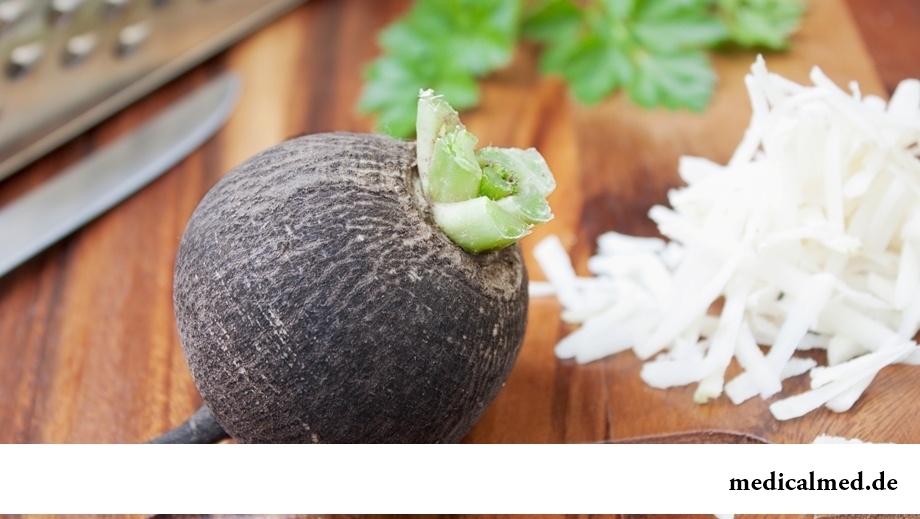
7. Parsnip
Parsnip root – the crop which is grown up today it is rare where – it is in appearance similar to carrots, but, unlike it has white color. Sweetish, slightly spiciness of vegetable allows to use it in preparation of various purees, sauces, canned food. It is considered that the regular use of a parsnip prevents development of pathologies of heart, an urolithiasis, adjournment of salts, and also reduces the level of sugar and cholesterol in blood. In addition to a root, medical effect also the plant leaves which are used as spicy seasoning to food have. Thanks to high vitamin structure broth of leaves of a parsnip is effective at treatment of cough, catarrhal diseases and the weakened immunity.
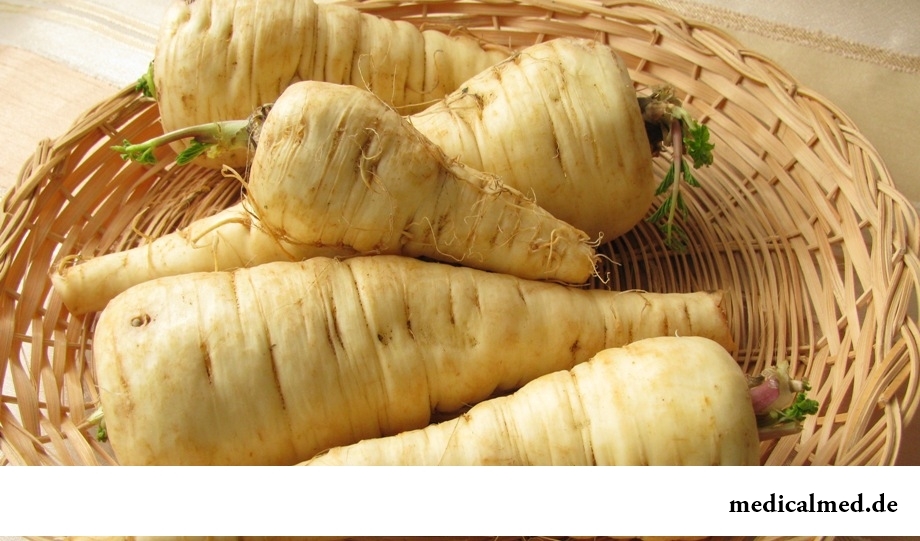
8. Lentil
This product of family of bean, being eurysynusic in Ancient Rome, Greece and Egypt, in the modern world unfairly we ignore. Nevertheless, a lentil dish it is much more useful related to it than cultures: peas, haricot, chick-pea. So, the portion of lentil contains about 90% of standard daily rate of folic acid. Besides, the product is rich with the Omega-3 and Omega-6 unsaturated fatty acids responsible for a condition of cellular membranes, but not synthesized by an organism. Together with lentil of people receives phytalbumin, cellulose, vitamins, minerals, microelements and useful amino acids. One of them, tryptophane, is responsible for production of the serotonin increasing mood and resilience to stresses.
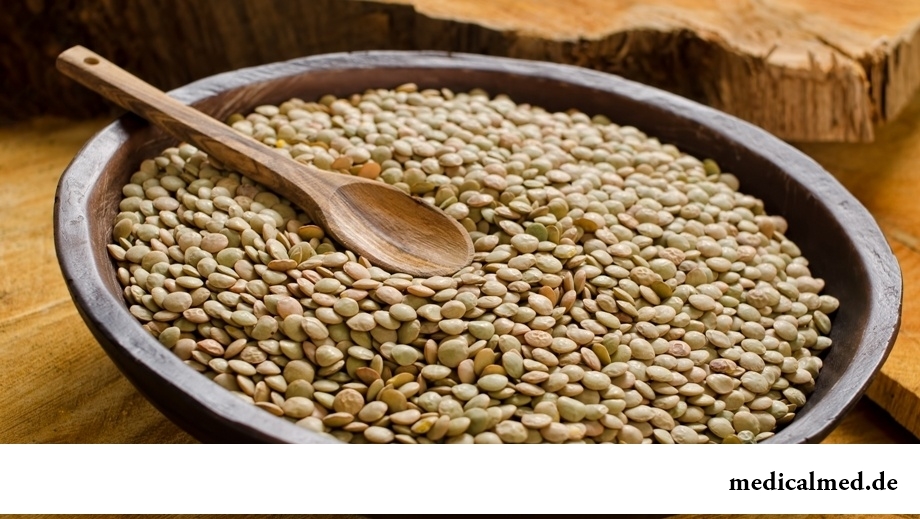
9. Rhubarb
Today you will seldom meet a plant with red scapes and big green leaves on vegetable beds whereas long time in Russia the rhubarb was considered as the most valuable medicinal culture. Only the rhubarb stalk having pleasant taste with easy sourness which is, as a rule, extinguished with sugar addition is eaten. From vegetable tasty and useful desserts, carbohydrate-rich, vitamins (In, C, PP), pectin, citric and apple acids turn out. The use of a rhubarb promotes the best work of the alimentary system, being used as laxative and cholagogue means, and also is prevention of tuberculosis, anemia, heart diseases, slight, catarrhal diseases. Children should use vegetable with care: high content of oxalic acid in a rhubarb against the background of unripe digestion can cause serious poisoning.
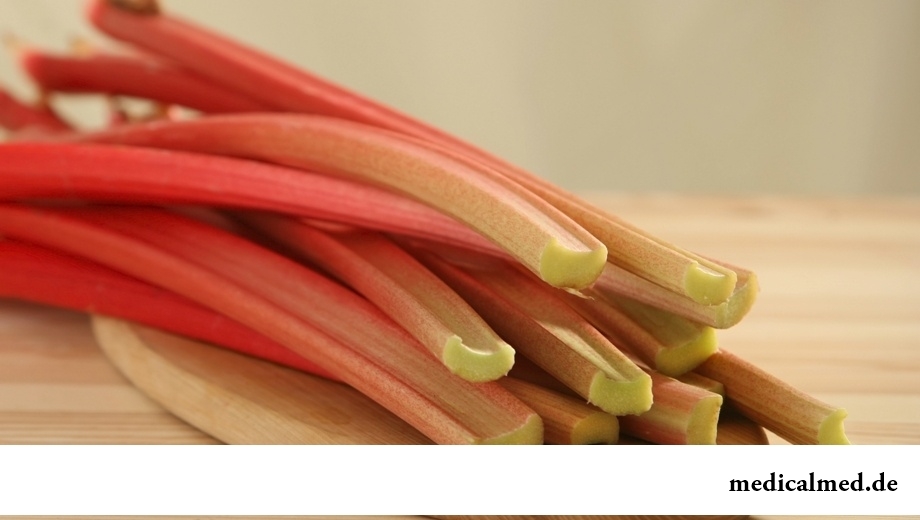
Our kidneys are capable to clear three liters of blood in one minute.

EKO, or extracorporal fertilization - a method of treatment of infertility which became the reason of a set broken mines in due time...
Section: Articles about health
Small appetite at the child – the complaint which pediatricians should hear practically from each mother. Most often it is carried to the category of children's whims, however the refusal of food in certain cases can be to alarming symptoms therefore it cannot be ignored....
Section: Articles about health
Dark circles (bruises) under eyes – a shortcoming with most of which often fight against the help of cosmetics (proofreaders, saloon procedures and so forth), eliminating only its visibility. However, according to doctors, skin around eyes – the indicator of many disturbances in an organism. To reveal them at early stages, without having disguised bruise, and having addressed its reasons – a task of each person who is regularly finding under with own eyes dark stains. Early detection and elimination of the disease lying in wasps...
Section: Articles about health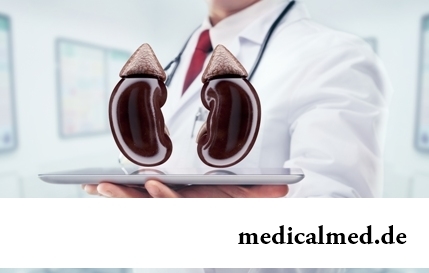
Kidneys perform the most important function of clarification of blood from those products of metabolic processes which cannot be used орг...
Section: Articles about health
To look healthy and means well-groomed not only to be pleasant to people around, but also to feel strong, sure and taken place. Specialists in the field of cosmetology quite often note that whether not all women are able to look after skin...
Section: Articles about health
Statistically, in Russia about 34% of citizens smoke. Most of consumers of tobacco has problems with health sooner or later. Not only smokers, but also their relatives suffer. Besides, cigarettes are expensive, and need of their acquisition goes a heavy burden on the budget of thousands of Russian families. Many people dream to refuse harmful tendency, but everyone manages to make it not: nicotine addiction is affectionate and to get rid of it not easy....
Section: Articles about health
All the known slogan "Protect Men!" arose not from scratch. In a sense, the nature created representatives of strong...
Section: Articles about health
One of the major chemical processes happening in a human body are oxidation reactions. They go with participation of fats and carbohydrates which we receive from food, and the oxygen getting to us from air. A main goal of such reactions is it is received...
Section: Articles about health
The climax, or menopause is the normal process of the termination of genital function of the woman which is followed by serious hormonal changes in an organism. Usually the menopause begins at the age of 50-55 years, but characteristics of this process are very individual. Factors of earlier approach of a climax are irregular sex life, numerous abortions, addictions, existence of endocrine, autoimmune and gynecologic diseases, frequent stresses and excessive hobby of diets...
Section: Articles about health
The fatigue, sleep debt, disturbances of food, bad mood, vagaries of the weather – all these circumstances badly are reflected in our vn...
Section: Articles about health
Cystitis, or inflammation of a mucous membrane of a bladder, this very widespread disease which, owing to some features of a structure of bodies of urinogenital system, women have approximately four times more often than men. In the main risk group...
Section: Articles about health
Statistically, at the address to doctors seven of each ten patients complain of a headache. Actually it is much more people who are periodically feeling unpleasant feelings such. Many people, apart from a headache the reason for serious fears, prefer to muffle independently the next attack medicines. Such behavior is extremely careless, especially if this symptom appears regularly and is followed by other signs of an indisposition. Constants head Bol...
Section: Articles about health
About 10-15 years ago existence of the computer in the apartment of the Russian was considered as a rarity and office rooms were only on перв...
Section: Articles about health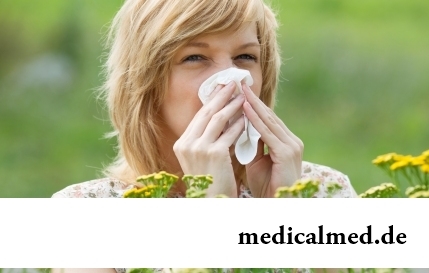
There comes the season of issues. Many Russians already dream of outdoor recreation, trips, beautiful seaside beaches. At this time there is no wish to think of problems with health and other unpleasant things, however there are subjects which require attention. Summer...
Section: Articles about health
Many of us, probably, noticed more than once that from intellectual loadings at some point the brain as though "overheats" and "assimilation" of information is strongly slowed down. Especially this problem urgent for persons of age becomes more senior than fifty years. "Already badly I think", "the head will burst now", "memory as if is disconnected" - here that wants to be told at the time of information overload....
Section: Articles about health
80% of women at least once to lives complained of discomfortable feelings to breasts, consolidations and nagrubaniye. These are mastopathy symptoms. Mas...
Section: Articles about health
Weakness of an ankle joint – very widespread problem. Its existence is demonstrated by tendency to a podvorachivaniye of legs when walking on heels, frequent painful sprains, pain on average and anonymous toes even after small nagruzo...
Section: Articles about health
The medicine promptly develops, and the fact that else quite recently it seemed by miracle can now. We are not surprised any more to the fact that people with artificial joints and extremities can play sports, organ transplantation became a routine, and the latest cancer medicine allowed to achieve reduction of mortality in tens of times. Miracles of plastic surgery thanks to which people in 60 years are in the flower of beauty and freshness, too not a sensation any more....
Section: Articles about health
Physical activity is necessary for normal functioning of a human body. At a lack of the movement cease функц...
Section: Articles about health
The advantage of swimming for the person is so high that this sport is not only the most popular, but also is widely applied in medicine and rehabilitation processes. If you look for for yourself the occupation allowing pleasantly and to spend time, then swimming with advantage...
Section: Slideshow
People know that thermal sources have salutary force long ago. Treatment by natural waters is one of the most ancient methods of disposal of the most different diseases. Bathtubs, souls, wrappings and inhalations, in combination with water reception inside help to improve a condition of the patients suffering from disturbances of work of a musculoskeletal system, bodies of digestive tract, cardiovascular, nervous, respiratory and secretory system, skin and endocrine п...
Section: Articles about health
On the head of the person about one million hair follicles, or as they are called still, hair bulbs are located. At the moment he is born...
Section: Articles about health
Osteoporosis this general disease which main sign is decrease in density of a bone tissue. On distribution width it takes the fourth place among noninfectious diseases. The illness develops at mature age more often: in our country to them harvest seasons...
Section: Articles about health
The metabolism at each person proceeds in own way. However between the speed of this process and disposal of excess weight after all all have a dependence. Unfortunately, the people inclined to try on itself numerous "miracle" diets, not always consider this circumstance and with the most resolute intentions begin to eat so that artificially slow down the metabolism instead of to accelerate it. Except quite clear disappointment, incorrectly picked up systems...
Section: Articles about health
The state of health of the person depends on many factors. One of the most important is the constant but which is not exhausting, motive...
Section: Articles about health
The pancreas performs two functions in a human body: release of enzymes without which digestion of carbohydrates, fats and proteins, and a producing hormones is impossible. The most important of them - insulin, is the main participant of carbohydrate metabolism, a normal...
Section: Articles about health
Among a set of the perfumery and cosmetic goods which are released today the special group is made by the means containing antibacterial components. Such types of gels, shampoos, soaps, creams, lotions and other products are positioned by manufacturers as a panacea from all diseases caused by pathogenic microorganisms. The unlimited and uncontrolled use of similar means becomes result of trustfulness of the buyers hypnotized by persuasive advertizing sometimes. Many spetsial...
Section: Articles about health
